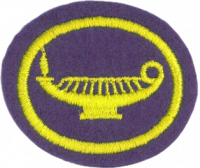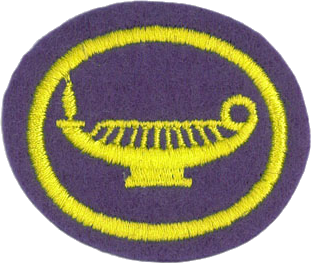Difference between revisions of "AY Honors/Home Nursing/Answer Key/es"
(Created page with "{{clear}}") |
(Updating to match new version of source page) |
||
| (28 intermediate revisions by 2 users not shown) | |||
| Line 1: | Line 1: | ||
| − | + | {{HonorSubpage}} | |
| − | + | <!--{{Honor Master|honor={{#titleparts:{{PAGENAME}}|1|3}}|master=Spiritual Growth and Ministries|group=Outreach and Ministries}}--> | |
| − | {{ | ||
| − | |||
| − | |||
| − | |||
| − | |||
| − | |||
| − | |||
| − | |||
| − | }} | ||
| − | |||
| − | {{Honor Master | ||
| − | |||
| − | |||
| − | |||
<section begin="Body" /> | <section begin="Body" /> | ||
{{ansreq|page={{#titleparts:{{PAGENAME}}|2|1}}|num=1}} | {{ansreq|page={{#titleparts:{{PAGENAME}}|2|1}}|num=1}} | ||
| Line 66: | Line 52: | ||
<!-- 3. Saber los síntomas de una fiebre. Saber cómo tomar la temperatura de una persona. Saber cómo bajar la temperatura. --> | <!-- 3. Saber los síntomas de una fiebre. Saber cómo tomar la temperatura de una persona. Saber cómo bajar la temperatura. --> | ||
| − | {{clear}} | + | {{clear}} |
{{clear}} | {{clear}} | ||
| Line 121: | Line 107: | ||
{{clear}} | {{clear}} | ||
| − | + | {{clear}} | |
| − | |||
| − | |||
{{clear}} | {{clear}} | ||
| Line 153: | Line 137: | ||
{{ansreq|page={{#titleparts:{{PAGENAME}}|2|1}}|num=8}} | {{ansreq|page={{#titleparts:{{PAGENAME}}|2|1}}|num=8}} | ||
<noinclude></noinclude> | <noinclude></noinclude> | ||
| − | <!-- 8. | + | <!-- 8. Saber cuándo y cómo lavarse las manos cuando está cuidando de una persona enferma. --> |
| − | |||
{{clear}} | {{clear}} | ||
| Line 166: | Line 149: | ||
{{ansreq|page={{#titleparts:{{PAGENAME}}|2|1}}|num=9}} | {{ansreq|page={{#titleparts:{{PAGENAME}}|2|1}}|num=9}} | ||
<noinclude></noinclude> | <noinclude></noinclude> | ||
| − | <!-- 9. | + | <!-- 9. Saber cómo hacer una cama confortable para el paciente en cama. --> |
{{clear}} | {{clear}} | ||
| − | {{clear}} | + | {{clear}} |
| − | {{clear}} | + | {{clear}} |
{{clear}} | {{clear}} | ||
| Line 180: | Line 163: | ||
{{clear}} | {{clear}} | ||
| − | {{clear}} | + | {{clear}} |
{{clear}} | {{clear}} | ||
| Line 194: | Line 177: | ||
{{ansreq|page={{#titleparts:{{PAGENAME}}|2|1}}|num=10}} | {{ansreq|page={{#titleparts:{{PAGENAME}}|2|1}}|num=10}} | ||
<noinclude></noinclude> | <noinclude></noinclude> | ||
| − | <!-- 10. | + | <!-- 10. Mostrar cómo alimentar a un paciente desvalido en la cama. --> |
| − | |||
{{clear}} | {{clear}} | ||
| Line 211: | Line 193: | ||
{{ansreq|page={{#titleparts:{{PAGENAME}}|2|1}}|num=11}} | {{ansreq|page={{#titleparts:{{PAGENAME}}|2|1}}|num=11}} | ||
<noinclude></noinclude> | <noinclude></noinclude> | ||
| − | <!-- 11. | + | <!-- 11. Mostrar cómo dar medicamento líquido y pastillas o cápsulas a los niños y adultos. Conocer cómo aplicar correctamente gotas para los ojos. --> |
| − | |||
| − | |||
| − | {{clear}} | + | {{clear}} |
{{clear}} | {{clear}} | ||
| Line 221: | Line 201: | ||
{{clear}} | {{clear}} | ||
| − | + | {{clear}} | |
| − | + | {{clear}} | |
| − | + | {{clear}} | |
| − | + | {{clear}} | |
| − | |||
| − | + | {{clear}} | |
<noinclude></noinclude> | <noinclude></noinclude> | ||
| Line 236: | Line 215: | ||
{{ansreq|page={{#titleparts:{{PAGENAME}}|2|1}}|num=12}} | {{ansreq|page={{#titleparts:{{PAGENAME}}|2|1}}|num=12}} | ||
<noinclude></noinclude> | <noinclude></noinclude> | ||
| − | <!-- 12. | + | <!-- 12. Demostrar el método de dar fomenteras y baño de pies. Explicar el valor de su uso y decir las condiciones en que dichos tratamientos se debe dar. --> |
| − | |||
| − | |||
| − | |||
| − | |||
| − | |||
| − | |||
| − | |||
| − | |||
| − | |||
| − | |||
| − | |||
<noinclude></noinclude> | <noinclude></noinclude> | ||
| Line 253: | Line 221: | ||
{{ansreq|page={{#titleparts:{{PAGENAME}}|2|1}}|num=13}} | {{ansreq|page={{#titleparts:{{PAGENAME}}|2|1}}|num=13}} | ||
<noinclude></noinclude> | <noinclude></noinclude> | ||
| − | <!-- 13. | + | <!-- 13. Demostrar la aplicación de una compresa caliente y el uso de calor y frío para el tratamiento de la inflamación y moretones. --> |
| − | + | {{clear}} | |
| − | |||
| − | + | {{clear}} | |
| − | |||
| − | + | {{clear}} | |
| − | + | {{clear}} | |
| − | + | {{clear}} | |
<noinclude></noinclude> | <noinclude></noinclude> | ||
| Line 271: | Line 237: | ||
{{ansreq|page={{#titleparts:{{PAGENAME}}|2|1}}|num=14}} | {{ansreq|page={{#titleparts:{{PAGENAME}}|2|1}}|num=14}} | ||
<noinclude></noinclude> | <noinclude></noinclude> | ||
| − | <!-- 14. | + | <!-- 14. Explicar cómo los siguientes remedios naturales ayudan a prevenir las enfermedades (notar como la primera letra de cada uno deletrea la palabra ADELANTE): --> |
<noinclude></noinclude> | <noinclude></noinclude> | ||
{{ansreq|page={{#titleparts:{{PAGENAME}}|2|1}}|num=14a}} | {{ansreq|page={{#titleparts:{{PAGENAME}}|2|1}}|num=14a}} | ||
| − | <noinclude></noinclude> | + | <noinclude></noinclude><noinclude></noinclude> |
| − | |||
| − | <noinclude></noinclude> | ||
{{CloseReq}} <!-- 14a --> | {{CloseReq}} <!-- 14a --> | ||
{{ansreq|page={{#titleparts:{{PAGENAME}}|2|1}}|num=14b}} | {{ansreq|page={{#titleparts:{{PAGENAME}}|2|1}}|num=14b}} | ||
| − | <noinclude></noinclude> | + | <noinclude></noinclude><noinclude></noinclude> |
| − | |||
| − | <noinclude></noinclude> | ||
{{CloseReq}} <!-- 14b --> | {{CloseReq}} <!-- 14b --> | ||
{{ansreq|page={{#titleparts:{{PAGENAME}}|2|1}}|num=14c}} | {{ansreq|page={{#titleparts:{{PAGENAME}}|2|1}}|num=14c}} | ||
| − | <noinclude></noinclude> | + | <noinclude></noinclude><noinclude></noinclude> |
| − | |||
| − | <noinclude></noinclude> | ||
{{CloseReq}} <!-- 14c --> | {{CloseReq}} <!-- 14c --> | ||
{{ansreq|page={{#titleparts:{{PAGENAME}}|2|1}}|num=14d}} | {{ansreq|page={{#titleparts:{{PAGENAME}}|2|1}}|num=14d}} | ||
| − | <noinclude></noinclude> | + | <noinclude></noinclude><noinclude></noinclude> |
| − | |||
| − | <noinclude></noinclude> | ||
{{CloseReq}} <!-- 14d --> | {{CloseReq}} <!-- 14d --> | ||
{{ansreq|page={{#titleparts:{{PAGENAME}}|2|1}}|num=14e}} | {{ansreq|page={{#titleparts:{{PAGENAME}}|2|1}}|num=14e}} | ||
| − | <noinclude></noinclude> | + | <noinclude></noinclude><noinclude></noinclude> |
| − | |||
| − | <noinclude></noinclude> | ||
{{CloseReq}} <!-- 14e --> | {{CloseReq}} <!-- 14e --> | ||
{{ansreq|page={{#titleparts:{{PAGENAME}}|2|1}}|num=14f}} | {{ansreq|page={{#titleparts:{{PAGENAME}}|2|1}}|num=14f}} | ||
| − | <noinclude></noinclude> | + | <noinclude></noinclude><noinclude></noinclude> |
| − | |||
| − | <noinclude></noinclude> | ||
{{CloseReq}} <!-- 14f --> | {{CloseReq}} <!-- 14f --> | ||
{{ansreq|page={{#titleparts:{{PAGENAME}}|2|1}}|num=14g}} | {{ansreq|page={{#titleparts:{{PAGENAME}}|2|1}}|num=14g}} | ||
| − | <noinclude></noinclude> | + | <noinclude></noinclude><noinclude></noinclude> |
| − | |||
| − | <noinclude></noinclude> | ||
{{CloseReq}} <!-- 14g --> | {{CloseReq}} <!-- 14g --> | ||
{{ansreq|page={{#titleparts:{{PAGENAME}}|2|1}}|num=14h}} | {{ansreq|page={{#titleparts:{{PAGENAME}}|2|1}}|num=14h}} | ||
<noinclude></noinclude> | <noinclude></noinclude> | ||
| − | |||
<noinclude></noinclude> | <noinclude></noinclude> | ||
| Line 317: | Line 268: | ||
<noinclude></noinclude> | <noinclude></noinclude> | ||
==Referencias== | ==Referencias== | ||
| − | |||
<noinclude></noinclude> | <noinclude></noinclude> | ||
| − | + | {{CloseHonorPage}} | |
Latest revision as of 23:40, 18 July 2022
Nivel de destreza
2
Año
1938
Version
17.05.2024
Autoridad de aprobación
Asociación General
1
Para consejos e instrucciones, véase Primeros auxilios II.
2
2a
- Sopa clara o de crema
- Cualquier bebida que tiene los siguientes criterios
- Pudín
Para una comida ser clasificada como líquido, tendría que ser capaz de ser colada cuando se calienta. Por ejemplo, pudines de mandioca no calificarían, pero un batido sin pedazos de fruta u otros alimentos podría calificar.
2b
Una dieta blanda se recomienda en muchas situaciones, incluyendo algunos tipos de disfagia (dificultad para tragar), cirugía que involucran la mandíbula, la boca o el tracto gastrointestinal, y el dolor de aparatos dentales recién ajustados.
Una dieta blanda puede incluir muchos alimentos en puré, cubiertos o colocados con salsas o en salsa, o colocados en sopas, guisos, o curry.
2c
Esta dieta es culturalmente diversa e incluye lo siguiente:
- La comida que es fácil de digerir
- No picante
2d
Una dieta completa también se refiere a veces como la dieta general. Incluye todos los alimentos y las bebidas.
3
4
5
6
7
8
9
10
11
12
13
14
14a
14b
14c
14d
14e
14f
14g
14h


